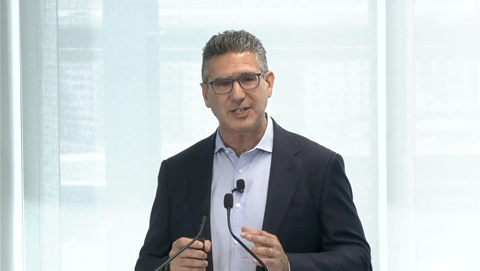The Federal Government has committed a further $4 million of funding into a long-running plan to streamline financial reporting.

The Treasury-led scheme, which mirrors US efforts to encourage a standard means of reporting financial data across the nation, was expected to generate $1.3 billion of economic benefit to the wider economy over five years.
The Federal Government was reportedly prepared to spend $243 million on the voluntary scheme.
This week it spent $4 million on Fujitsu software designed to speed the flow of financial data as it sluiced through the economy.
The project was aimed at increasing the transparency of financial data by tagging it with standard definitions.
Currently, businesses used a variety of confusing and at times misleading terminology to report financial data to the markets.
"Opaque" measures such as EBITDA (earnings before interest, tax, depreciation and amortisation) - a questionable accounting measure of profitability - would be captured and singled out, said XBRL Australia founder and consultant Trevor Pyman.
By standardising how financial data was reported, it was hoped that analysts, investors and numbers nerds could more easily and reliably build platforms that surfaced the data into spreadsheets, visualisation packages, RSS feeds and even Twitter streams for publication.
The increase in standard financial data availability could also give Australia's economy a kick along and release capital for investment similar to the spreadsheet revolution that spurred mergers and acquisitions activity in the 1980s.
Pyman said such goals rely on financial data being appropriately and consistently tagged by agencies and the private sector.
Fujitsu's Interstage XWand software extracted financial data from reports and "tagged" it for processing using the eXtensible Business Reporting Language or "XBRL", an open standard for finance reporting.
XWand development tools were compatible with modern flavours of Windows including Windows 7 by the time it was released on October 22. Applications developed under XWand ran on the Java 1.4.2 virtual machine making it compatible with any modern operating system.
Although he wouldn't reveal which accounting software makers were ready for the new system, Treasury deputy secretary and program director Paul Madden told iTnews that Treasury had "strong relationships" with Australia's leading developers.
SAP and Oracle were reported to be among 10 such software makers supporting Treasury's plans. Microsoft's Great Plains has also used XBRL tags since at least 2003.
Software developers have also been provided with a set of 2838 common definitions or tags of financial meanings such as "earnings" and "revenue", to assist them in creating platforms or modifying existing products to conform to the Treasury-led initiative.
Definitions were coalesced from 87 forms including business activity statements and income tax returns and provided to developers with a software development kit last Friday.
Read on for information on the long road to XBRL adoption...
The long road to XBRL adoption
XBRL was conceived by US accountant Charlie Hoffman in 1998 but was slow to catch on owing to the complexity of getting so many groups to collaborate to build the standard's foundations.
In Australia, it has long been promoted by XBRL Australia, a member of the international advocacy group, established in 2002 with a $160,000 grant from the defunct National Office of the Information Economy.
Pyman said the Government's involvement had short-circuited the "chicken and egg" scenario, in which developers wouldn't use the standard until there was enough demand for it.
He predicted economic growth would flow from investors and day traders accessing standardised "streams" of financial data that reduced risk.
And he warned investors to be wary of companies that chose not to use the transparent XBRL standard.
"This is a tool that allows transparency," Pyman said.
"If you want transparency you use the tool and if you don't want transparency you won't.
"That says something about you and you might find investors tend to shun people who make it hard for them to investigate [their businesses]."
The Australian Government project is voluntary, unlike a compulsory scheme set by the US Government Securities and Exchange Commission (SEC) which requires 500 companies and mutual funds with market capitalisations in excess of $US5 billion to tag their financial data. In time, the SEC will place these same requirements on smaller US businesses.
This requirement was introduced when the SEC moved from its Edgar forms-based electronic filing system, to IDEA, an interactive disclosure system based on XBRL.
In a 143-page proposed rule filing, the SEC said XBRL filings made financial information easier for investors to analyse, automated regulatory filings, sped accurate information transfer and disclosure and would "eventually reduce costs".
A practical goal was to help the commission more speedily investigate the sorts of illicit backdating and share trades that caught short the likes of Apple chief executive officer Steve Jobs, Brocade, McAfee and Research in Motion (RIM) executives.
In September, 2007 the SEC finished work on 12,000 tags that defined the generally accepted accounting principles.
Madden said groups in the two countries were working to make their respective taxonomies compatible for easier cross-border sharing of information.


.png&h=140&w=231&c=1&s=0)

_(5).jpg&h=140&w=231&c=1&s=0)



.png&w=100&c=1&s=0)

 iTnews Benchmark Security Awards 2025
iTnews Benchmark Security Awards 2025
 Digital Leadership Day Federal
Digital Leadership Day Federal
 Government Cyber Security Showcase Federal
Government Cyber Security Showcase Federal
 Government Innovation Showcase Federal
Government Innovation Showcase Federal
 Digital NSW 2025 Showcase
Digital NSW 2025 Showcase












_(1).jpg&h=140&w=231&c=1&s=0)



